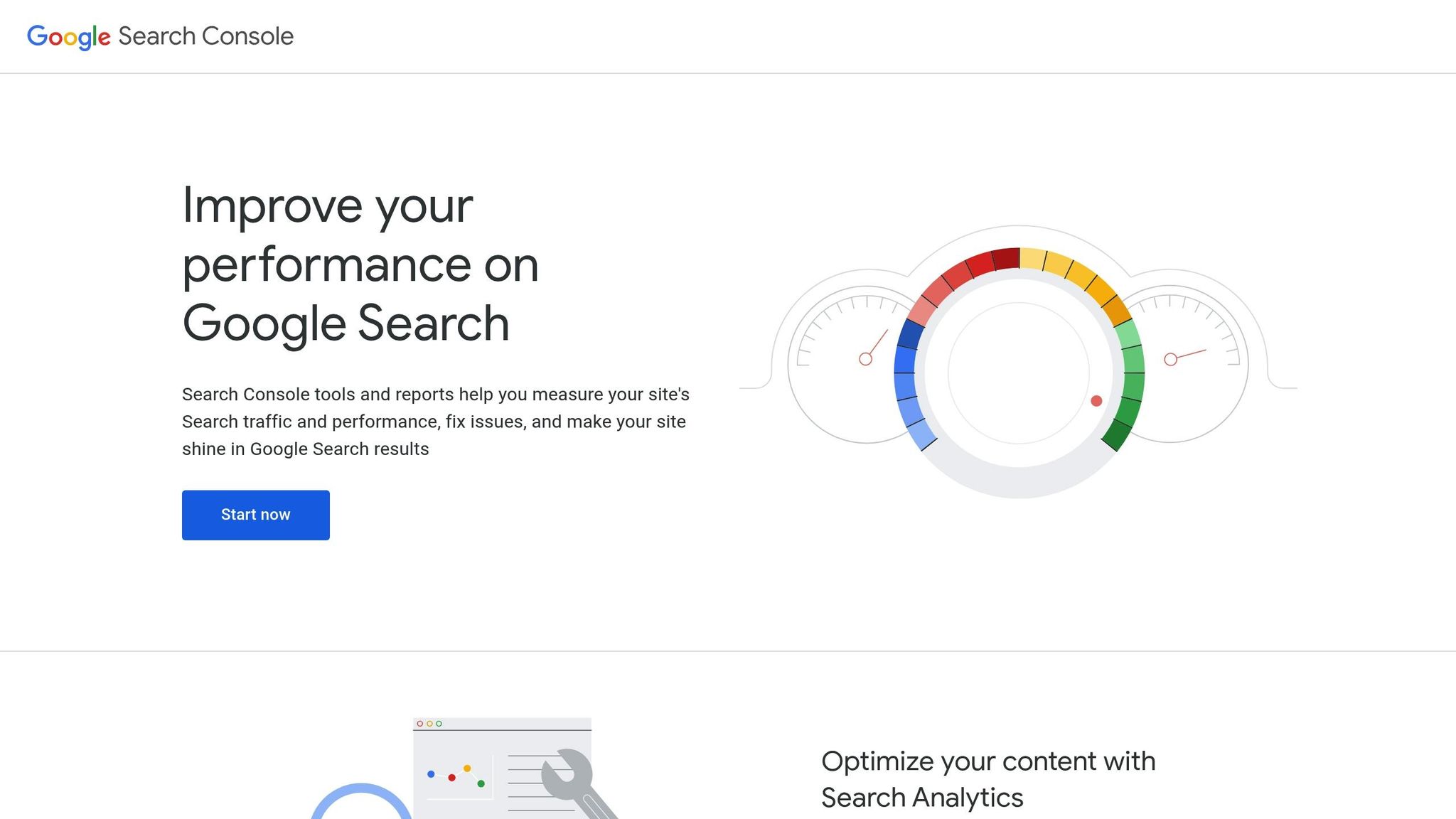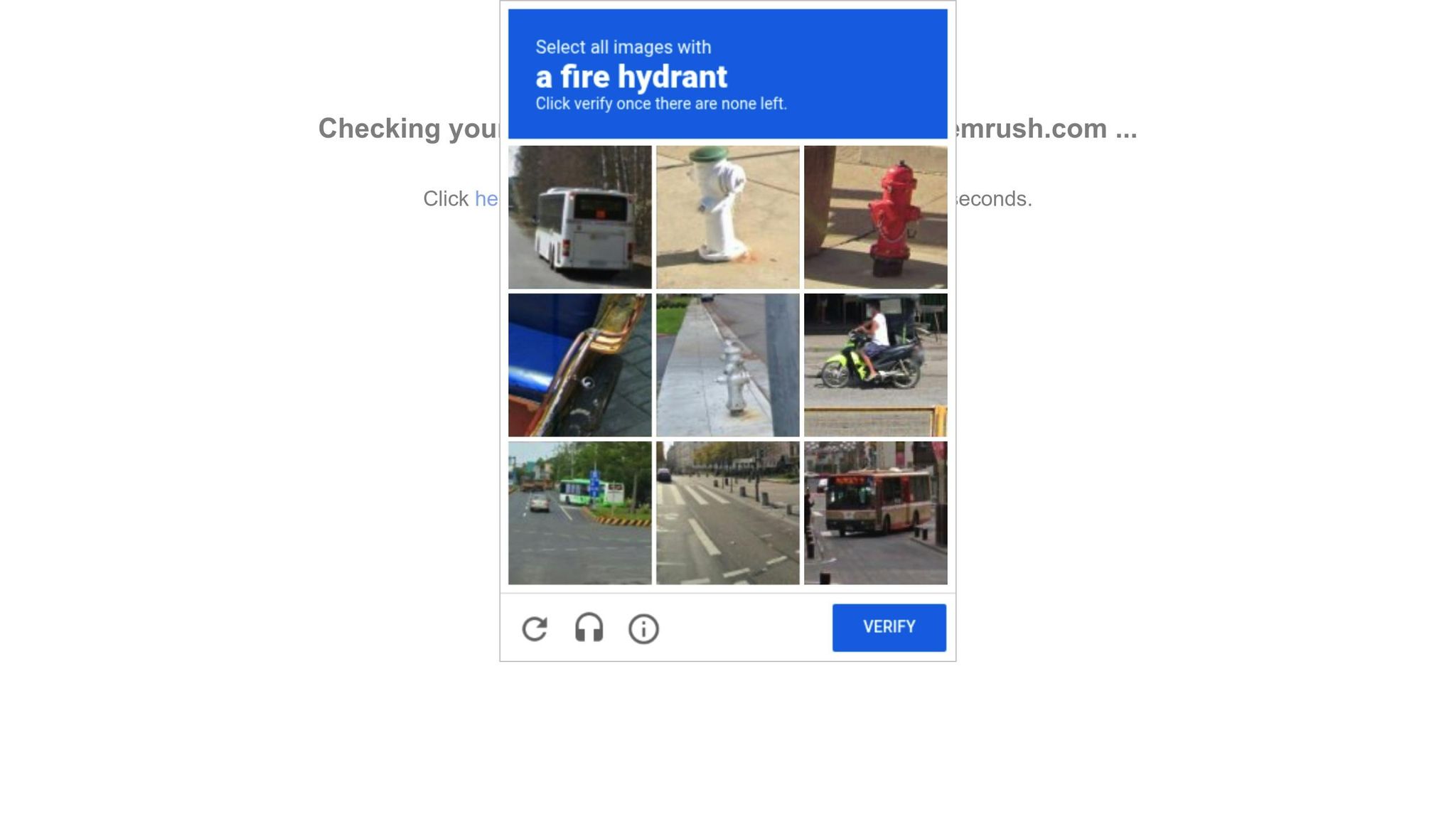Keyword rank tracking helps you monitor where your website stands in search results and shows how your SEO efforts are paying off. Here’s why it matters and how to get started:
- Why Track Rankings?
- Measure SEO performance and progress.
- Spot new opportunities to rank higher.
- Optimize your content for better visibility.
- Top Tools to Use:
- Google Search Console: Free, tracks average position and performance trends.
- Ahrefs: Tracks mobile/local rankings and SERP features daily.
- Semrush: Offers competitor tracking and historical data.
- How to Track Effectively:
- Focus on keywords that align with your goals and user intent.
- Use a consistent schedule: daily for key terms, weekly or monthly for trends.
- Compare your rankings with competitors and monitor SERP features.
Tracking your rankings gives you the data you need to improve your SEO and grow your online presence. Let’s dive into the tools and strategies to help you succeed.
Basics of Keyword Rank Tracking
What Keyword Rank Tracking Means
Keyword rank tracking involves monitoring your website’s position in search engine results pages (SERPs) for specific search terms. It helps you keep an eye on where your content stands for targeted keywords and how those rankings change over time.
For example, if you’re targeting the term "best running shoes", rank tracking can show whether your page appears on the first page of results or further down – and how its position shifts as you optimize your content.
Why Rank Tracking Matters
Tracking keyword rankings is essential because it shows how your SEO strategies are performing and helps guide your next steps.
Evaluate SEO Success: Rank tracking delivers clear metrics to assess the effectiveness of your efforts. As SearchX puts it, "Our mission is simple: we drive measurable results." This data can help you:
- Confirm which SEO tactics are working
- Pinpoint the updates that make the biggest impact
- Track progress toward your visibility goals
Make Smarter Budget Decisions: Knowing which keywords perform best allows you to:
- Concentrate resources on terms that deliver results
- Cut back on efforts for low-performing keywords
- Make informed choices about where to invest in content
Boost Business Growth: By tracking rankings, you can uncover opportunities to grow your site’s traffic and authority. This includes:
- Spotting chances to capture more search traffic
- Finding gaps in your content that need attention
- Using insights to strengthen your site’s overall performance
Refine Your Content Strategy: Regularly monitoring rankings helps you:
- Create content that aligns with user search intent
- Identify trending topics in your niche
- Update older content to improve its rankings
- Target keywords that align with buyer intent and drive conversions
3 Simple Ways to Track Keyword Rankings on Google
Top Tools for Rank Tracking
Tools like Google Search Console, Ahrefs, and Semrush provide reliable, up-to-date data for tracking your rankings. Here’s how to make the most of them.
Google Search Console Setup

- Log into Google Search Console (GSC) and choose your property.
- Open the Performance report.
- Click "+ New" to apply filters for queries, pages, or locations.
- Keep an eye on the Average Position metric.
- Export monthly data to analyze historical trends.
Note: GSC retains data for 16 months and reports average positions rather than exact rankings. For deeper analysis, tools like Ahrefs can provide additional features, including SERP element tracking.
Ahrefs Rank Tracking Guide

Ahrefs offers detailed rank tracking, including updates for local and mobile rankings every 24–48 hours. The platform tracks 15 different SERP features and allows for location-specific monitoring to help you measure performance more accurately.
Semrush Position Tracking

Semrush’s Position Tracking tool is packed with features and was recognized as the "Best All-in-One SEO Tool" by Search Engine Journal in 2024.
| Feature | Details |
|---|---|
| Update Frequency | Every 3–7 days |
| Competitor Tracking | Monitor up to 5 competitors |
| SERP Features | Tracks 12 types |
| Historical Data | Stores data for 12 months |
Leverage the Share of Voice Score to assess overall visibility. Set up daily alerts for position changes of ±5 and review your data weekly for actionable insights.
sbb-itb-880d5b6
Rank Tracking Methods That Work
Choosing Keywords to Monitor
Pick keywords that align with your business goals and match what your target audience is searching for. Prioritize terms that:
- Bring in relevant traffic
- Align with your content’s purpose
- Show clear user intent
- Have a reasonable monthly search volume
Instead of tracking every variation, group similar keywords. For instance, if "SEO services" is your focus, also keep an eye on related terms like "SEO company" and "SEO agency" to get a full picture of your visibility.
Once you’ve chosen your keywords, set up a regular schedule to track them.
Setting Up Regular Tracking
Use a structured approach to track your keywords consistently. Here’s a helpful framework:
| Tracking Frequency | Key Actions | Purpose |
|---|---|---|
| Daily | Check major keywords | Detect sudden ranking shifts |
| Weekly | Review SERP features | Spot opportunities like featured snippets |
| Monthly | Analyze historical data | Understand long-term trends |
| Quarterly | Perform competitor analysis | Evaluate your market position |
Adjust how often you track based on the size of your website and how competitive your industry is.
Monitoring Rankings and Competition
Keep an eye on your rankings and compare them with competitors by focusing on these key areas:
- Performance Benchmarking
Measure your rankings against industry standards. Focus on high-converting keywords, track visibility in SERP features, and compare rankings on mobile versus desktop. - Competitive Analysis
Analyze how your rankings stack up against competitors. Look for keywords where they dominate, identify new keyword opportunities, and track their performance in SERP features. - Technical Monitoring
Stay on top of technical factors like page load speed, mobile responsiveness, Core Web Vitals, and indexing status.
To make this process smoother, use tools like Google Search Console, Ahrefs, and Semrush for deeper insights and actionable data.
Making Sense of Ranking Data
Main Tracking Metrics
Keep an eye on these key metrics to understand your rankings better:
| Metric | What to Track | Why It Matters |
|---|---|---|
| Average Position | Daily changes | Tracks overall visibility trends |
| Click-Through Rate (CTR) | Percentage of clicks vs. impressions | Measures how effective your SERP listing is |
| Search Volume | Monthly searches for tracked keywords | Guides where to focus optimization efforts |
| Ranking Stability | Position fluctuations over time | Highlights the effects of algorithm updates and competition |
| SERP Features | Featured snippets, knowledge panels, etc. | Points to additional ranking opportunities |
Content Updates Based on Rankings
Use ranking data to fine-tune your content:
- Revamp Underperforming Pages: Look at pages ranking between 11–30. Update title tags, meta descriptions, and expand content to aim for top 10 rankings.
- Match Search Intent: If a keyword ranks well but has a low CTR, tweak the content to better match the dominant SERP format. For example, create how-to guides, lists, or detailed articles depending on what users expect.
- Set a Content Update Schedule:
| Content Age | Update Frequency | Focus Areas |
|---|---|---|
| 0–3 months | Monthly | Monitor performance and make small tweaks |
| 3–12 months | Quarterly | Add updated data and address emerging trends |
| 1+ year | Bi-annually | Conduct a full refresh to keep content relevant |
After updating, focus on targeting specific SERP features to maximize visibility.
SERP Features to Target
Different SERP features need tailored strategies:
Featured Snippets
Create content designed to grab featured snippets by using clear headings, concise answers (40–50 words), step-by-step instructions for how-to topics, and formatted tables for comparison queries.
People Also Ask (PAA)
- Research related questions in your niche.
- Add sections to your content that answer these questions.
- Use question-based headings (H2, H3, H4).
- Keep answers short and factual to align with the PAA format.
Local Pack
- Optimize your Google Business Profile with accurate details.
- Ensure consistent NAP (Name, Address, Phone) information across platforms.
- Encourage genuine customer reviews.
- Develop content tailored to specific locations.
Conclusion
Using the tools and methods discussed, a disciplined approach to tracking keywords can help you refine and improve your SEO strategy. Keeping a close eye on keyword rankings allows for smarter, data-backed decisions that enhance both visibility and overall performance.
"SearchX isn’t just an SEO provider – we’re an extension of your team, focused on accelerating your growth."
Key Components of an Effective Keyword Tracking Strategy
Data-Driven Insights
- Track ranking changes to measure the success of your tactics.
- Review historical data to allocate resources effectively.
- Use performance metrics to adjust and refine your approach.
Strategic Execution
- Prioritize keywords that align with your business objectives and user intent.
- Keep an eye on SERP features to uncover new ranking opportunities.
- Stick to a consistent tracking schedule for reliable trend analysis.
By following these principles, your SEO efforts can remain flexible and competitive. Tools like Google Search Console, Ahrefs, and Semrush are essential for monitoring traditional rankings as well as newer SERP features.
Regular tracking and updates to your strategy are key to staying ahead of search engine algorithm changes and competitors. Whether you’re focusing on featured snippets, local pack results, or organic rankings, consistent analysis ensures you’re prepared for shifts in the SEO landscape.
Keyword tracking isn’t just about gathering data – it’s about turning that data into actionable steps that support your business growth. By applying the strategies and techniques outlined in this guide, you’ll be better positioned to make informed decisions that elevate your SEO performance.
Let your keyword tracking evolve with your business goals, focusing on what impacts your bottom line. Routine monitoring, paired with updates to your content and technical SEO, lays the groundwork for long-term success in organic search.
FAQs
Why should I use tools like Google Search Console, Ahrefs, and Semrush together to track keyword rankings?
Using multiple tools like Google Search Console, Ahrefs, and Semrush allows you to gain a more comprehensive view of your keyword performance. Each tool offers unique features and insights, helping you cross-check data for accuracy and uncover opportunities you might miss with just one platform.
For example, Google Search Console provides direct insights into how your site performs on Google, while Ahrefs and Semrush offer advanced analytics, competitor tracking, and keyword difficulty metrics. Combining these tools ensures you can track trends, understand search intent, and refine your SEO strategy effectively over time.
How do I choose the best keywords to track for my business goals?
To select the right keywords for tracking, start by identifying terms that are relevant to your business, products, or services. Focus on keywords with high search intent that align with your target audience’s needs and goals.
Consider factors like search volume, competition levels, and relevance to your business objectives. Prioritize keywords that strike a balance between being popular enough to drive traffic and realistic enough to rank for, based on your current SEO efforts.
If you’re unsure where to start, professional SEO services can help identify and analyze the most effective keywords tailored to your business strategy.
What should I do if my keyword rankings drop?
If your keyword rankings drop, there are several effective steps you can take to recover and improve them:
- Analyze the drop: Use tools like Google Search Console to identify which keywords are affected and investigate potential causes, such as algorithm updates, increased competition, or changes in user behavior.
- Optimize your content: Refresh your content by ensuring it aligns with current user intent, includes relevant keywords naturally, and provides value to your audience.
- Improve technical SEO: Address any technical issues, such as slow page load times, broken links, or mobile usability problems, to ensure your site is search-engine-friendly.
- Build quality backlinks: Strengthen your website’s authority by earning links from reputable and relevant sources.
Consistently monitoring your rankings and staying proactive with these strategies can help you regain and maintain strong keyword positions.




